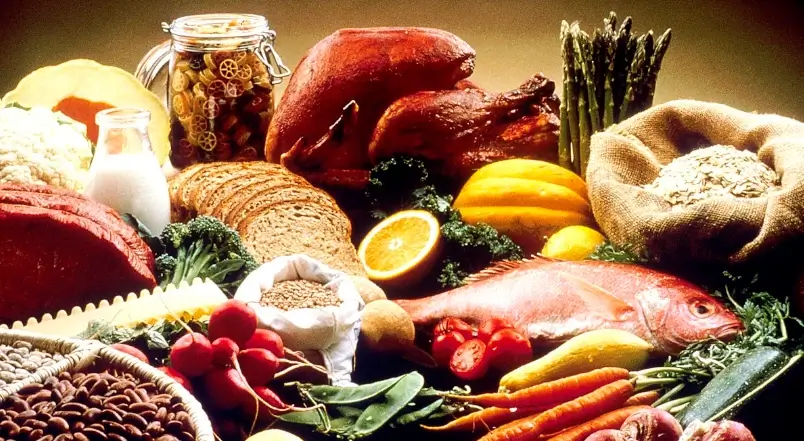Introduction
Trans fatty acids (TFA) are unwanted lipid molecules because they are recognized as harmful.
They are naturally present in some foods (especially milk , derivatives and some meats ), but in absolutely reduced concentrations compared to those of industrial products containing hydrogenated fats . Moreover, some studies differentiate the health risks of those obtained industrially or transformed by cooking , from those naturally present in food (for example vaccenic acid); the latter would be harmless or even beneficial to health.
Hydrogenation process
Without going into detail on the subject (already extensively covered in the various dedicated articles) let’s try to give an understandable meaning to the term ” hydrogenated fat “: it is an unsaturated lipid (with one or more double bonds, therefore initially of a liquid consistency) artificially saturated (breaking the double bonds by adding the missing hydrogens, therefore transformed into a solid) by means of a chemical-physical process called hydrogenation ; this artifact is made at the request of the food industries which, based on the needs of the various preparations ( brioches , bread sticks , etc.) choose the specific consistency of the hydrogenated fat (there are different levels of hydrogenation).
Trans Fatty Acids
In organic chemistry a fatty acid is defined as trans when, from a “geometric” point of view, the hydrogen (H) normally bonded to a carbon (C) is placed in a specularly opposite direction to the cis form. Apparently the molecule does not change, except for a small detail, well, this trifle makes a trans fat a potentially harmful element.
The following are quite common trans fatty acids: myristelaidic acid, palmitelaidic acid, petroselaidic acid, elaidic acid, vaccenic acid, cetelaidic acid, brassidic acid and linolelaidic acid.
Food sources
Trans fatty acids are present above all in hydrogenated fats, therefore in foods containing margarine or in foods fried in semi-hydrogenated oils/fats; but not only. Even the simple excessive thermal exposure favors the cis/trans mutation, as occurs for example during excessive frying and/or exceeding the smoke point; moreover, following peroxidation and rancidity (due to bacteria, light, oxygen, high temperatures, etc.) a further increase in these unwanted molecules can be observed.
However, there are also many natural foods that themselves contain trans fatty acids; this is the case of dairy products and meat obtained from the slaughter of some animals. This phenomenon is linked to the gastrointestinal physiology of ruminants which, during the digestive process, undergo bacterial fermentation of the digestive content; during this process, the microorganisms determine the conversion of some cis fatty acids into trans fatty acids which are then absorbed in the intestine, secreted in milk and/or accumulated in meat. Let me be clear, we are talking about concentrations ranging from 1/7 to 1/30 of those referred to margarines, therefore (in my opinion) not very relevant, even if worthy of note.
The foods that contain the greatest amount of trans fatty acids are : margarines, brioches, sweet snacks , pretzels , frozen french fries , donuts , butter, bouillon cubes, soup mixes, fast- foods , frozen fish in breadcrumbs, pop -corn in bag, seasoned cheeses , etc.
Side Effects and Dangers
According to the most important international research institutes, there is no amount of trans fats that our body can tolerate without experiencing its negative effects.
Eating mainly, or even frequently, foods rich in trans fats is harmful to health. Not only that, the consumption of hydrogenated or partially hydrogenated oils, even just a small percentage in the daily diet, is sufficient to create alterations in the body.
The substantial problem that our organism shows towards these fatty acids probably consists in the fact that it does not have the specific enzyme ( lipase ) to regulate their metabolic transformation.
Trans fatty acids are linked by numerous scientific studies to: alterations in the metabolism of lipids and glucose , changes in the functionality of the cell membranes of neurons ( cells of the nervous system ), obesity, carcinogenesis , hormonal and fertility problems.
A diet characterized by foods rich in trans fats is correlated above all to excessive weight , to an increased risk of hypercholesterolemia and diabetes , therefore of vascular diseases ( atherosclerosis and stroke ), and nervous degeneration such as Alzheimer’s disease .
More specifically, trans fatty acids:
- worsen the transport of fats in the blood by lipoproteins ; they cause a reduction in the transporters of cholesterol from the periphery to the liver ( HDL ) and increase the carriers of cholesterol from the liver to the periphery ( LDL ). In the long term, this unwanted mechanism can determine the accumulation of oxidized LDL within the vascular walls and subsequently (also thanks to inflammatory processes ) the formation of atherosclerotic plaques with an increased risk of mortality (atherosclerosis).
Note : In the US alone, trans fats are estimated to be implicated in the deaths of several tens of thousands of people each year from coronary heart disease and cancer . However, it is difficult to relate a disease of multiple aetiology to a single factor, so these numbers may be lower or even higher.
- they worsen cellular efficiency and functionality, interfering in the liquid mosaic of cell membranes and causing a relative “stiffening” with consequent limitation of the potential for energy production, absorption and communication with other cells. Moreover, trans fatty acids compete with the essential ones in the constitution of cell membranes; even a significant intake of omega 3 and omega 6 can therefore be nullified by an overall incorrect diet .
- they also negatively affect the integrity of the central nervous system ; the brain of a subject who frequently feeds on trans fats ages faster, is more prone to degenerative diseases such as senile dementia and reacts badly to depressive disorders “.
Note : from 12/13/2014 the expression “totally or partially hydrogenated”, depending on the case, must appear on the label if the oils or fats present in the food product have been hydrogenated. It is also mandatory to specify the specific vegetable origin of the oils that make up the mixture of vegetable fats (e.g. palm oil , coconut oil , etc.).
Safety limit
The World Health Organization and the Food and Agriculture Organization of the United Nations advise reducing trans fat intake to below 1 percent of total calories. The European Food Safety Authority (EFSA) suggests taking as little as possible.
Bibliography
- Handbook of oils and fats – P. Capella, E. Fedeli, G. Bonaga, G. Lerker – New techniques –12.3
- Clinical nutrition manual – R. Mattei – Maedi-Care – pag 37-38




